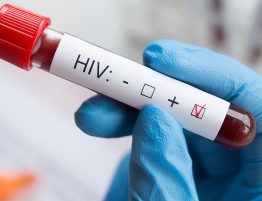
Enterovirus infection is a group of acute infectious diseases caused by intestinal viruses (enteroviruses).
This infection is characterized by a fairly acute onset, fever and a wide variety of clinical symptoms caused by damage to the gastrointestinal tract, cardiovascular, nervous and muscular systems, as well as the lungs, liver, kidneys and other organs.
Enteroviral infection is widespread and is recorded throughout the year. The greatest number of cases of disease is recorded from June to October.
It can be observed in the form of isolated cases, local outbreaks (usually in children’s groups) and in the form of large epidemics affecting a number of countries.
Enteroviruses can affect people at almost any age. The greatest risk of contracting this infection is in children under 10 years of age, while children in the first year of life are more susceptible to this infection.
The peculiarity of pathogens is their high infectiousness and resistance in the external environment and a low infectious dose. They can remain viable on environmental objects for several weeks and can withstand repeated freezing and thawing. At the same time, they are quickly destroyed under the influence of ultraviolet irradiation, drying and boiling.
The source of infection is a patient or a virus carrier.
The virus is released into the environment from the human nasopharynx within 1-2 weeks after the onset of the disease, and from feces – within several weeks and even months. Infection with enterovirus infection occurs when a person consumes contaminated food or water, as well as through dirty hands and household items. The pathogen can also be transmitted by airborne droplets (during talking, coughing and sneezing). The most intense release of the pathogen is observed in the first days of the disease.
From the onset of infection to the first clinical manifestations, it takes from 2 to 10 days, more often 2-5 days.
About 85% of cases of enterovirus infections are asymptomatic, 12% of cases are diagnosed as mild febrile illnesses and about 1-3% have a severe course, especially in young children and people with impaired immune systems.
The following clinical forms of enterovirus infection are distinguished:
- enteroviral fever (minor disease) is an acute febrile short-term illness without clinically significant damage to internal organs. The temperature usually lasts 1-3 days. In terms of frequency of distribution, this form ranks 1st among other clinical syndromes caused by enteroviruses;
- enteroviral diarrhea – temperature rises to 38°C, vomiting, abdominal pain, flatulence, frequent loose stools appear; Children of the first years of life are more likely to get sick;
- herpetic sore throat – against the background of an increase in temperature, bubbles (vesicles) appear on the mucous membrane of the respiratory tract and oral cavity (on the anterior arches of the palate, tonsils, uvula, and posterior wall of the pharynx), which open after 24- 48 hours and erosions and ulcers with a gray coating and a red rim form, a sore throat occurs;
- enteroviral exanthema – the onset of the disease is acute, there is a fever of up to 38-39 ° C, symptoms of intoxication (weakness, headache and muscle pain, sore throat), a variety of rashes that appear immediately after the temperature drops by 2-3 days, typical localization of the rash – torso, limbs, feet, face; lasts 2-3 days;
- serous meningitis – there is an increase in temperature to 38-39 ° C, symptoms of intoxication. By the end of the 1st or 2nd day of illness, complaints arise of severe headache, vomiting, stiff neck, confusion, paresis and paralysis, etc. may occur;
- epidemic myalgia – against the background of complete health, chills, fever, severe attacks of pain in the muscles of the chest, abdomen, lower back and legs suddenly occur; increased pain is observed when moving, coughing.
Less common are clinical forms such as enteroviral conjunctivitis, myocarditis, hepatitis, etc.
To protect yourself and your children from enterovirus infection, the following is recommended:
- observe personal prevention measures: wash your hands thoroughly with soap after visiting the toilet, before and during food preparation, before eating, and also after coming home from the street;
- Do not drink unboiled water, water from open reservoirs or other water sources; do not swim in open waters, where swimming is not recommended or prohibited;
- Wash fruits, berries, vegetables thoroughly under running water, then rinse them with boiled water;
- Use separate kitchen utensils and utensils, such as knives and cutting boards, for processing raw foods;
- follow the regime for washing tableware and kitchen utensils using detergents;
- refrain from purchasing perishable food products in places where there is no refrigeration equipment;
- do not consume expired products;
- do not carry or store raw foods and those that will not be heat treated (sausages, butter, cheeses, cottage cheese) in the same package;
- observe the temperature conditions for storing perishable products;
- protect food from flies, insects, rodents, pets;
- before preparing food and feeding children, wash your hands thoroughly with soap;
- When feeding infants, use only freshly prepared baby formula;
- Wash children’s dishes and toys regularly using approved detergents, then rinse thoroughly and rinse with boiling water before use.
If your child is sick, do not take him to kindergarten or school, so as not to infect other children with the infection, seek medical help from a doctor.
Following these simple rules will protect you and your loved ones from enterovirus infection, as well as other intestinal infections.
State Institution “Brest Regional Center for Hygiene, Epidemiology and Public Health”







